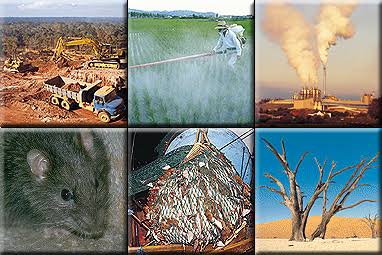The variety and variability of life on earth (biodiversity conservation) is threatened due to alteration or destruction of natural habitats, over harvesting of species, environmental pollution, climate change etc. however, biodiversity must be preserved as they maintain the integrity of the environment, provides basic need e.g. food, medicine, industrial raw materials, has aesthetic value etc.
Importance of Biodiversity Conservation
1. It maintains the integrity of the environment, expressed as maintaining CO2 / O2 balance, regulation of biological cycles, decomposition etc.
2. It has utilitarian values as it provides us with basic need e.g. food, medicine, industrial raw materials etc.
3. Biodiversity has aesthetic value as it beautifies our environment, enhance leisure or sporting activities etc.
4. Ensures survival/existence of life forms regardless of their importance or no importance.
Read Also: Laboratory Analysis of Plant Samples Techniques
Threats to Biodiversity

The importance of biodiversity cannot be over emphasized however it is threatened (endangered). These threats are mostly due to human mismanagement of biological resources often misguided by economic policies and faulty institutions. Some of these threats include:
1. Habitat alteration or destruction: increased exploitation of natural resources results in land use changes leading loss in genetic diversity, species reduction and increased changes in the ecosystem such as dwindling populations of organisms.
2. Overharvesting of species: this occurs when a particular species are taken e.g. through hunting, fishing, food gathering, trade etc. at a higher rate than can be sustained by the natural reproductive capacity of the population being harvested.
This practice can lead to extinction of certain life forms and eventually leading to loss of species. However certain laws can be made to protect overharvesting, which if eventually happens is called poaching. Harvesting under a given law is called cropping.
3. Pollution from chemicals or thermal emissions is a threat to biodiversity. Industrial activities can result in oil spills, acid precipitation etc. and excessive use of agro chemicals
e.g. DDT pollutes the ecosystem thereby constituting a danger to biodiversity.
4. Biological invasion: this occurs when species are introduced intentionally or accidentally in an ecosystem thereby causing changes in the ecosystem. The species are introduced in areas previously not native to them as such are regarded as pollutants. Some impacts of such invasions are hybridization, competition, disease outbreaks, disruption of food webs etc.
5. Climate change: nature has a range of tolerance and survival maintained for ecosystem stability and any change e.g. global warming can result in extinction of some species. The
changes may be gradual or abrupt such that if the limit is exceeded, the upper or lower species could suffer extinction.
6. Increased human population: the increase in human population has also given rise to increased demand for natural resources/ raw materials which consequently has brought about changes in biodiversity.
7. Failed institutional policies: failure of mandated institutions to internalize the values of biodiversity in decision making process of their nation/ populace threatens biodiversity. A holistic approach towards biodiversity conservation by such institutions is therefore necessary.
Read Also: Sources of Salt-Affected Soils
In conclusion, threats to biodiversity exist despite its importance in maintaining the balance of the environment among other functions. The threats are mostly attributed to mismanagement of biological resources often misguided by economic policies and faulty institutions.
Biodiversity maintains the integrity of the environment, provides us with basic need e.g. food, medicine, beautifies our environment and ensures survival/existence of life forms.
Despite these importance, biodiversity is threatened due to alteration or destruction of habitat, overharvesting of species, biological invasion, climate change, environmental pollution, increase in human population and failed institutional policies.
Read Also: Discovering the Wonders of Environmental Science
